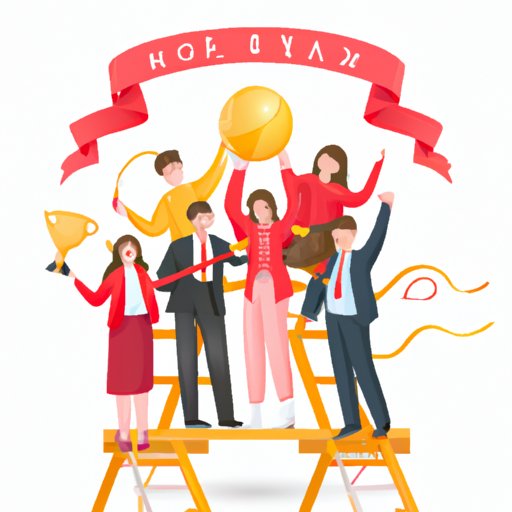
I. Introduction
Employee motivation is the driving force behind the success of any organization. It is crucial for employers to create an environment that fosters personal and professional growth and motivates employees to excel. In this article, we will explore various strategies to motivate your employees and boost their morale.
II. The Power of Positive Reinforcement
Positive reinforcement is the act of rewarding an employee’s good performance. Rewards can be as simple as verbal recognition or employee of the month awards. Positive reinforcement encourages employees to continue performing well and helps to build a culture of appreciation. When implementing positive reinforcement, it is important to be consistent and timely with recognition. The rewards should be relevant, significant, and aligned with the company goals.
III. Empowering Through Autonomy
Autonomy refers to the freedom to make decisions and take ownership of tasks without micromanagement. Empowering employees through autonomy creates a self-motivated team that is passionate about their work. It fosters a sense of responsibility and accountability. It’s important to gradually increase autonomy to ensure employees feel confident and motivated. However, autonomy can also lead to a lack of alignment and communication. Employers can address this by establishing clear goals and communication protocols.
IV. Creating a Supportive Culture
A supportive work environment helps employees develop their skills and achieve their full potential. Employers should encourage employees to pursue their passions in the workplace and give them opportunities to learn new skills. This creates a culture of innovation where employees feel valued and appreciated. To cultivate this culture, it’s important to establish an open-door policy and provide constructive feedback. Employers should also be aware of cultural barriers such as unconscious bias that can impact employee motivation and engagement.
V. Incentivizing Success
Performance-based compensation is a powerful motivator that rewards employees for their hard work and achievements. Employers can design compensation plans that tie employee incentives to measurable goals. This aligns the interests of the employee with the company’s goals. Compensation can be in the form of bonuses, awards, or stock options. It’s crucial to ensure compensation aligns with the performance of the employee and the team.
VI. Cultivating Personal and Professional Development
Employee engagement is achieved through providing growth opportunities. Employers can offer training programs, mentoring, and job shadowing opportunities. This not only helps improve the employee’s skills but also creates growth opportunities for the company. Employers should prioritize employee development and provide resources for further education. Employers can measure the impact of growth opportunities through surveys or feedback from employees.
VII. Celebrating Milestones
Employee recognition is crucial for building a culture of appreciation and motivation. Employers should celebrate completed projects and milestones to show appreciation for their employee’s hard work and dedication. Milestone celebrations can range from a thank you note to a bonus or office party. The key is to make the celebration relevant to the team and the project. This ensures employees feel valued and appreciated for their contributions.
VIII. Encouraging Teamwork and Collaboration
Teamwork and collaboration are essential for creating a positive work environment and encouraging employee motivation. Employers can promote team building through team outings, brainstorming sessions, and cross-functional projects. These activities foster communication and innovation. It’s important to address potential conflicts that may arise in a collaborative setting by setting clear expectations and resolving any disputes in an open and respectful manner.
IX. Conclusion
Motivating employees is essential for a successful organization. Employers should create a culture of appreciation, empower employees through autonomy and growth opportunities, incentivize success, celebrate milestones, and encourage teamwork and collaboration. By implementing these strategies, employers can develop a passionate and motivated team that works towards achieving company goals. Remember that the key to successful motivation is personalization and prioritizing employee development.
Additional resources can be found at (insert link here).




